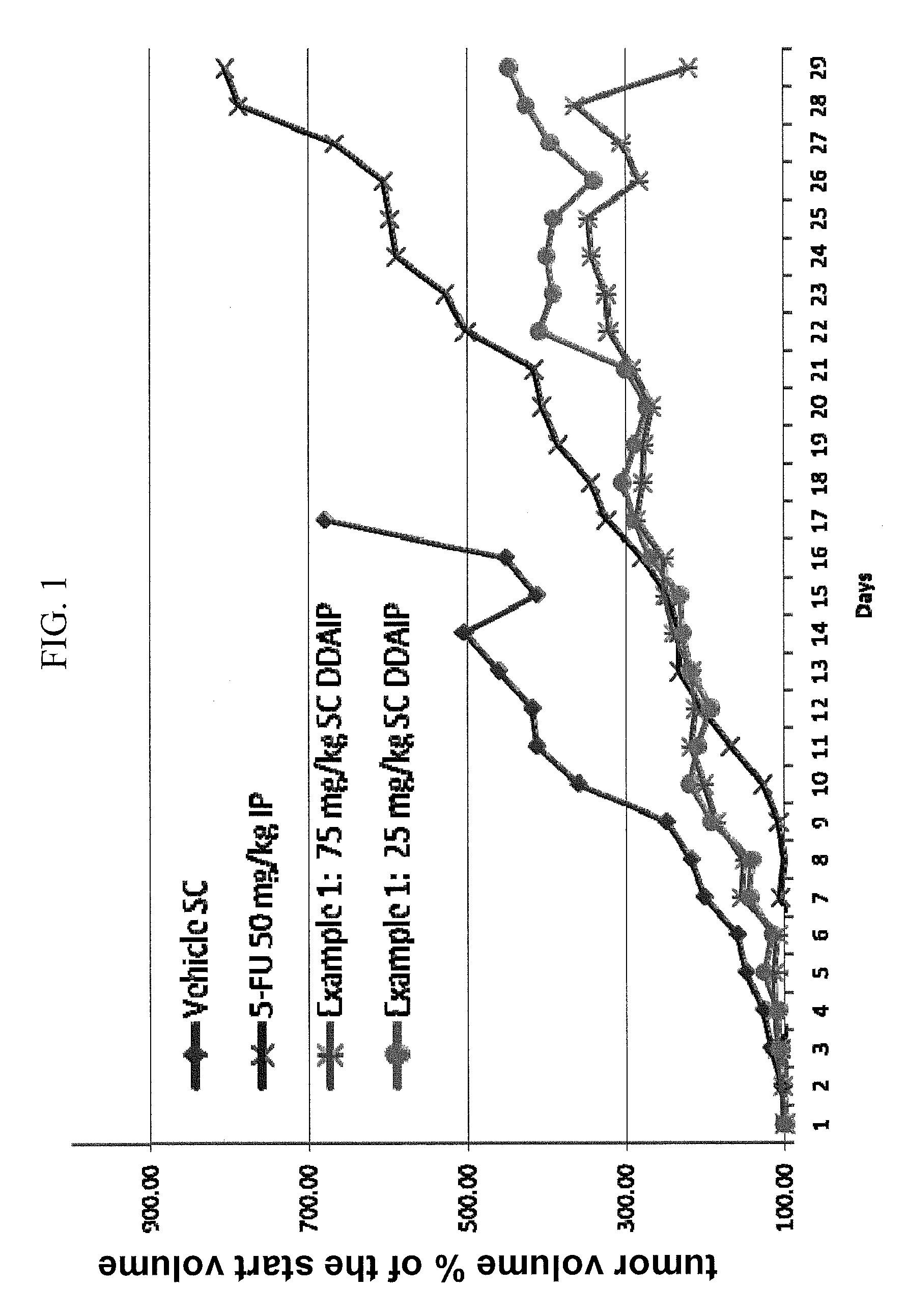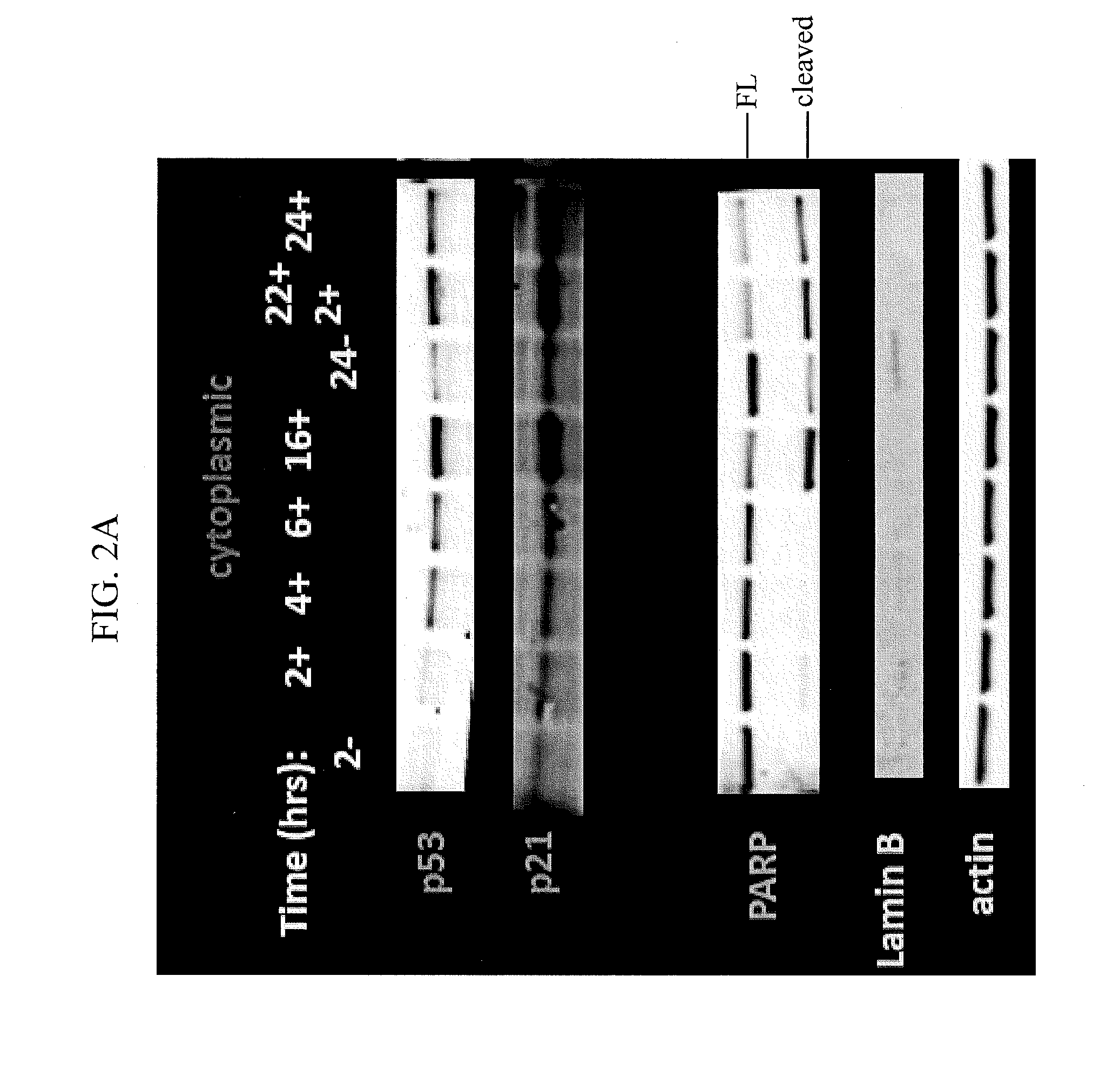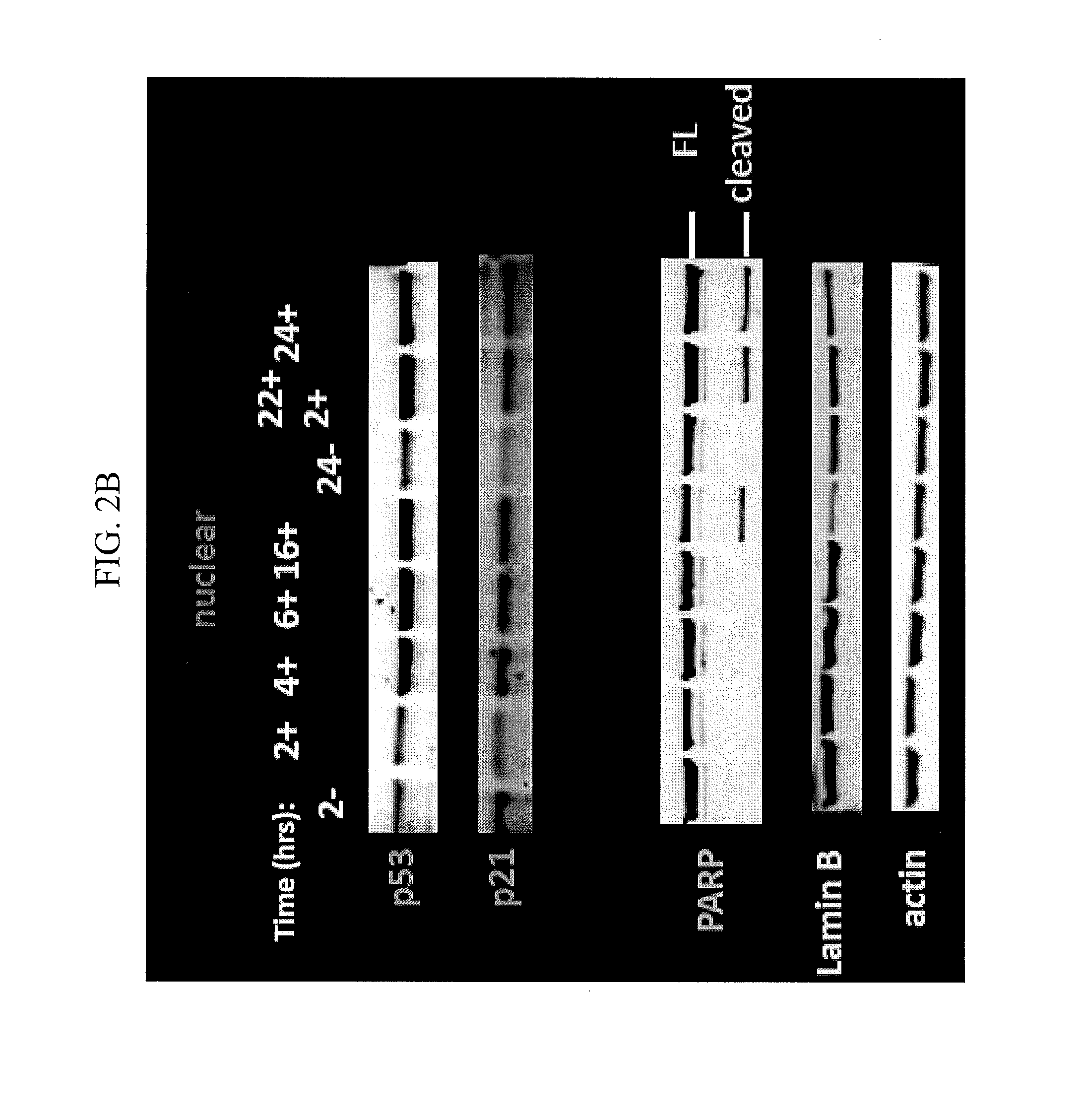Nuclear Transport Modulators and Uses Thereof
- Summary
- Abstract
- Description
- Claims
- Application Information
AI Technical Summary
Benefits of technology
Problems solved by technology
Method used
Image
Examples
example 1
Synthesis of (Z)-1-(3,3-difluoroazetidin-1-yl)-3-iodoprop-2-en-1-one (2a)
[0465]
[0466]A solution of (Z)-3-iodoacrylic acid (1a) (2.75 g, 1.0 eq.) in CH2Cl2 (25.0 mL) was cooled to 0° C. and sequentially treated with DIPEA (1.96 g , 1.1 eq), HATU (5.78 g, 1.1 eq) and 3,3-difluoroazetidine hydrochloride (1.98 g, 1.1 eq). The reaction mixture was stirred at 0° C. for 2-3 hr before being filtered, and concentrated under reduced pressure affording 3.5 g of crude compound. Purification by column chromatography (silica gel, elution with EtOAc / hexane) afforded 1.89 g of pure desired compound. Yield (49.87%). Mass: (ES+) 273.8 (M+1).
Synthesis of (Z)-3-(3-(3,5-bis(trifluoromethyl)phenyl)-1H-1,2,4-triazol-1-yl)-1-(3,3-difluoroazetidin-1-yl)prop-2-en-1-one
[0467]
[0468]A solution of 3-(3-(difluoromethyl)-5-(trifluoromethyl)phenyl)-1H-1,2,4-triazole (2) (1.5 g, 1.0 eq.) in DMF (9.0 mL) was treated with DABCO (1.19 g, 2.0 eq) and stirred for 30 mins before being treated (Z)-1-(3,3-difluoroazetidin-1...
example 2
[0474]
Synthesis of (Z)-3-(3-(3-fluoro-5-(trifluoromethyl)phenyl)-1H-1,2,4-triazol-1-yl)acrylic acid (1)
[0475]
[0476]A solution of (Z)-isopropyl 3-(3-(3-fluoro-5-(trifluoromethyl)phenyl)-1H-1,2,4-triazol-1-yl)acrylate (0.400 g, 1.0 eq.) in THF (5 mL) and water (5 mL) was treated with LiOH (0.097 g, 2.0 eq.). The reaction mixture was stirred at RT for 2-3 hrs, quenched with ice cold water (10 mL), acidified to pH 1-2 with dilute aqueous HCl and extracted with EtOAc (3×25 mL). The combined organic layers were dried over anhydrous Na2SO4 and concentrated under reduced pressure to afford 150 mg (42% yield) desired carboxylic acid, used in the subsequent step. Mass: (ES+) 302.19 (M+1).
Synthesis of (Z)-1-(3,3-difluoroazetidin-1-yl)-3-(3-(3-fluoro-5-(trifluoromethyl)phenyl)-1H-1,2,4-triazol-1-yl)prop-2-en-1-one
[0477]
[0478]A 25-mL flask was charged with (Z)-3-(3-(3-fluoro-5-(trifluoromethyl)phenyl)-1H-1,2,4-triazol-1-yl)acrylic acid (1) (0.150 g, 1.0 eq) followed by dichloromethane (3 mL) bef...
example 3
[0480]
Synthesis of (Z)-3-(3-(3-hydroxy-5-(trifluoromethyl)phenyl)-1H-1,2,4-triazol-1-yl)acrylic acid (1)
[0481]
[0482]A solution of (Z)-isopropyl 3-(3-(3-hydroxy-5-(trifluoromethyl)phenyl)-1H-1,2,4-triazol-1-yl)acrylate (4 g, 1.0 eq.) in THF (40 mL) and water (40 mL) was treated with LiOH (1.92 g, 4 eq.). The reaction mixture was stirred at RT for 2-3 hrs then quenched with acidic ice-water slurry (300 mL) and extracted with EtOAc (3×250 mL). The combined organic layers were washed with dil HCl solution (50 mL), dried over anhydrous Na2SO4 and concentrated under reduced pressure to afford 3 g of crude compound. The resulting crude off-white compound was used as such in the following step. Yield: 85.5%. Mass: (ES+) 299.92 (M+1).
Synthesis of (Z)-1-(3,3-difluoroazetidin-1-yl)-3-(3-(3-hydroxy-5-(trifluoromethyl)phenyl)-1H-1,2,4-triazol-1-yl)prop-2-en-1-one (2)
[0483]
[0484]A cold (0° C.) solution of (Z)-3-(3-(3-hydroxy-5-(trifluoromethyl)phenyl)-1H-1,2,4-triazol-1-yl)acrylic acid (1) (1.5 g...
PUM
| Property | Measurement | Unit |
|---|---|---|
| Fraction | aaaaa | aaaaa |
| Covalent bond | aaaaa | aaaaa |
Abstract
Description
Claims
Application Information
 Login to View More
Login to View More - R&D
- Intellectual Property
- Life Sciences
- Materials
- Tech Scout
- Unparalleled Data Quality
- Higher Quality Content
- 60% Fewer Hallucinations
Browse by: Latest US Patents, China's latest patents, Technical Efficacy Thesaurus, Application Domain, Technology Topic, Popular Technical Reports.
© 2025 PatSnap. All rights reserved.Legal|Privacy policy|Modern Slavery Act Transparency Statement|Sitemap|About US| Contact US: help@patsnap.com



